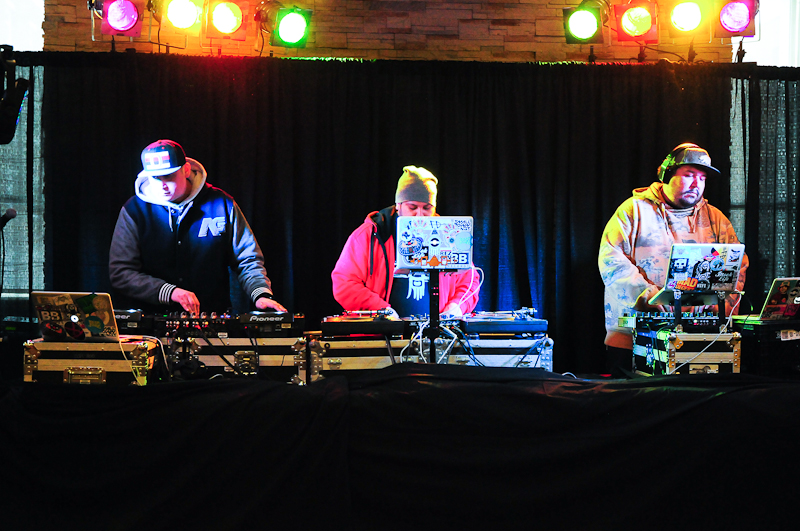Electronic beats mixed with traditional pow wow music engulfed Carleton University’s Fenn Lounge March 1 as part of this year’s 13th annual New Sun Conference.
A Tribe Called Red, recently nominated for a Juno, was one of the performers. The First Nations Producer and DJ crew consisting of DJ Shub (Dan General), DJ Bear Witness (Bear Thomas), and DJ NDN (Ian Campeau) turned the conference into a dance party.
Campeau said the band takes the influences they had when they were young and applies them to their music.
“I see A Tribe Called Red like hip hop was coming out of New York, being a product of the situation,” he said.
He credits their experiences with how they developed their sound. While he grew up listening to electronic music in Ottawa, he said Thomas was influenced by dance hall and reggae in Toronto, and General brings hip hop and scratching to the group.
“I guess our music is basically a product of the urban Aboriginal experience,” he said.
In 2007 the group started Electric Pow Wows in order to showcase themselves as indigenous DJs in the city, Thomas said. In the last seven years, they found the spotlight, which was one reason conference chair Allan Ryan said he chose them to perform.
“They’re fusion of tribal pow wow drumming and singing with world beat electronic dance has resulted in two acclaimed albums, numerous awards, and prestigious nominations, including Junos for breakthrough group of the year and electronic album of the year,” Ryan said.
The group takes traditional music and blends it with electronic to make something entirely new.
“I think that [the music] is a way to keep the culture fresh,” Métis artist Jaime Koebel said. “I think that it’s a way to keep the traditions active, and it goes back to this idea of you need to know what your culture’s about in order to change it. I think that what they’re doing is inspiring a generation of people to experiment with their culture in a respectful way so that it keeps it fresh and contemporary.
Other attendees of the conference said they agreed. The mixture of old and new makes the band’s music more accessible for all listeners.
“I think because of the choice of style of music that they do . . . they’re maybe more able to touch the youth than other drumming groups or singing groups like traditional pow wow music, and at the same time can touch non-Aboriginal youth,” Lena Remy, a Carleton University graduate student of Indigenous Studies, said.
“I think that’s a really good thing, because you have to mix people up and we have to work together,” she said. “It’s also the fact that it’s party music. It’s like, let’s go together and have fun. It’s easier to access for non-Aboriginal people as well as Aboriginal people.”






